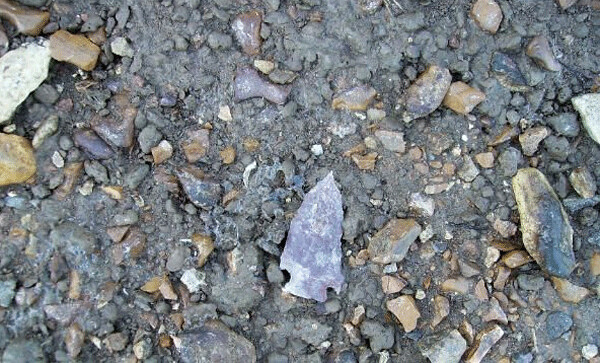News & Articles
Browse all content by date.

The Northland could have earlier human history, but a mile of glacial ice scouring to bedrock followed by prodigious flushing by melting ice means all trace of earlier activity is essentially lost. Signs of Northland human history begins (or ends depending on your point of view) around 9,000 years ago as the Lake Superior basin and highlands became ice free and habitable. You do have to be alert to catch a stone voice. Stones don’t yell except in the Koran where they are given voice to point out Jews to kill. In our realm you have to be observant and listening for the voice, one I’d wager the vast majority of us would fail to hear unless directed to it. In fact even the loudest of the stone voices is difficult to detect. I could take you to a place a little north of Thunder Bay where the ground was littered with ancient voices that could easily be unheard. Acres of debris from quarrying and roughing out stone tools hasn’t left a monumental statement until you realize its scope and begin to infer the large numbers of people over an extended period of time it took to leave this evidence.
Understandably, for most of us a voice in stone has to be something we can readily recognize and relate to. Finding a stone arrowhead on a trail is a loud enough voice for most to hear even though the presumed arrowhead is actually some other form of stone tool. More understandable is realizing very, very few would recognize the debris from making that stone tool or be able to spot discarded and failed attempts. I’ve been on many wilderness campsites where after a rain a tiny glint appears. It’s nothing, just a fleck. But when examined the fleck might be a flake, debris from napping high silica stone to give it a glassy cutting edge. None of the evidence is noisy and more often than not is simply trampled back into the campsite soil. But if you hear the stone voice it tells that over the span of time others were here living lives where hands played roles far different in manipulation than operating keyboards and cell devices. For every arrowhead found think how many lesser pieces and quieter stone voices there must be. We proudly put arrowhead or dart on public display, an act that makes mute those smaller voices without which the larger voice of a stone artifact could never be.
When I guided and also did archaeological projects a goal kept in mind whenever dealing with the public was to enlist them in the process and open them to the possibility of recognizing and hearing voices from long-agos outside our remembering. Sitting around a wilderness campfire who wouldn’t want to be the fortune favored discoverer of a fantastic artifact. The figures of Indiana Jones and Howard Carter hold considerable popular appeal. But for any big discovery there are thousands of lesser voices that must each be listened to and heard out. Think it through. If one arrowhead is needed to bring down your four footed future meal what then? Do you rip it apart with bare hands or do you need stone knives that need retouching to keep a good edge? The kill using an arrowhead is the first part of many steps calling for many tools and techniques we have to figure out on our own with little to go on.
For example, if you find the perfect and beautiful arrowhead you really have very little of the overall picture. The prehistoric hunter didn’t run up to a beast and throw the point to make the kill. A much more involved and trickier part of the song the stone arrowhead has to sing is left to the inner voice to hear and heed. How long was the bow used? What wood, woods, or bone was needed to make that bow? How was it strung and with what? What process was used to give a straight smooth flying arrow shaft? How much trial, error, and effort went into devising fletching with feathers? The arrowhead artifact is only the bold timpani in an orchestra of many voices, skills, sounds, and traditions that were of more overall importance than the pointed stone that seems the ultimate in expression. The soft stone voices found in the earth do not yell loudly or give up their fuller meanings before the ear and eye are trained and attuned. It is quite unlikely we’ll ever find an ancient woodland bow. Let’s say someone today did find part of a broken bow. Would it be recognized and valued or would it end up in the firewood pile?
Unless you were looking for it and knew what to look for would any of us be able to spot any of the key parts from a ruined bow? Or, much more likely because they were so much larger and needed a larger amount of material, how do you think we’d do recognizing a portion of flattened bark canoe buried in the muck and mud of a lake or river bank? Would we know the holes in a piece of grubby bark meant it had once been attached to a cedar gunwale? The voices in stone are faint. The whispers left by humans using organic material are so indistinct the listener had to partly infer if not intent so many missing parts, chords, and elements to see a ghostly form that might (only might) give a limited bit of voice to the long-ago past.
The earth talks through geology. History speaks its voiceless past through archaeology and its recorded past with writing. To me a very great part of this is in knowing these voices are not limited to the ears of a selected few. Over the coming summer many people will gather around wilderness campfires and feel the subtle awareness of voices from ancient stone and the whispers from long lost wood. How fortunate to hear the hint of those soft voices and how glorious to think to follow them to a source.
| Tweet |


